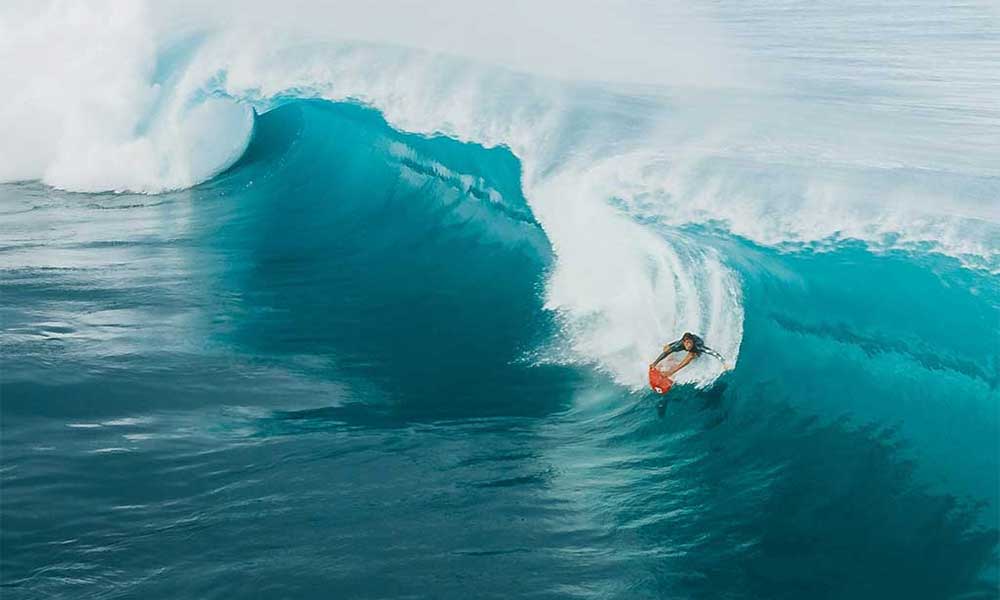According to the NOAA, the ocean is responsible for between 50% and 80% of the world’s oxygen supply, the majority of which comes from plankton.
It covers more than 70% of the earth’s surface while ocean currents and waves help with everything from energy production to marine migration.
It’s a pretty impressive beast, and if you’re ready to learn more, just take a look at these facts about ocean waves!
Waves are Caused by Wind
When the wind blows over the surface of the ocean, it creates friction, transferring energy from the wind and into the water.
The actual wave height is dictated by the wind speed and the size of the area hit by the wind.
When the wave hits shallow water, it drags across the ocean floor and slows down.
This is what causes the wave to break, as the top of the wave basically overtakes the bottom and crashes over it.
The Ocean Produces Wave Energy
Wave energy is a sustainable form of energy produced by ocean waves.
The first power generator is located off the coast of Portugal, producing energy through the movement of waves in the open ocean.
This is just one generator located in the Atlantic Ocean and it accounts for a minimal amount of energy that a country needs.
However, estimates suggest that the continental shelf of the United States holds enough wave energy potential to power between a third and two-thirds of the country’s energy requirements.
There are still a lot of challenges that need to be met, and solar power and other sustainable power sources are receiving significantly more funding, but we could see more wave-based energy projects in the years to come.
World Record Surf
In 2001, Brazilian Carlos Burle rode a wave that was 68-feet high to set a world record.
A decade later, Garrett McNamara added 10 feet to that record and in 2017, it was bettered by another Brazilian when Rodrigo Koxa rode a massive 80-foot wave (24.4 meters).
The 38-year old won the Quiksilver XXL Biggest Wave Award for his troubles and while there were a few more surfers adding their names to the history books in 2020, he is still the record holder at the time of writing.
You can watch Koxa’s history making moment on YouTube.
The record for the highest wave surfed by a woman is also held by a Brazilian. Maya Gabeira rode an impressive 73.5 feet (22.4 meters) in 2020, beating her previous record of 68 feet.
Dogs Also Surf the Waves
Surfing isn’t reserved for humans, as man’s best friend has been getting in on the act as well.
Dogs might not be able to reach the heights attained by Koxa, McNamara, and Gabeira, but there are some impressive records out there, along with some incredibly amusing videos that are sure to brighten your day.
Abbie Girl, an Australian Kelpie, holds the record for the longest canine surf after surfing for 351 feet (107 meters) back in 2011.
The Biggest Wave Reached 1,720 Feet
The largest wave on record occurred in 1958 in Lituya Bay, just off the coast of Alaska.
It began with an earthquake that eventually triggered a mega-tsunami estimated at between 100 and 300 feet.
The breaking waves from this tsunami created a mountain of water that stretched to a massive 1,720 feet or 524 meters and devastated everything in its path.
That’s bigger than 5 Statues of Liberty stacked on top of one another!
Quick Facts About the Ocean:
Super Salty: Seawater has a salinity of about 3.5%, which means that there is approximately 120 million tons of salt!
Marine Life: Most of the life on earth resides in the oceans, accounting for more than 9 out of every 10 species.
Unexplored: Only a fraction of the world’s oceans have been explored!
For all we know, Cthulhu could be loitering near the sea floor with all the mermaids and giant squid.
World’s Largest: The Pacific Ocean is the largest in the world and is home to over 25,000 islands.







